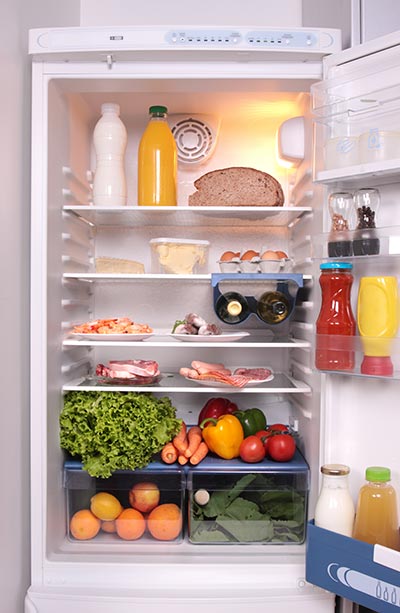 Those of us in the Midwest know that spring storms can bring power outages. When freezers and refrigerators are off for several hours, whether it’s due to a storm or an accident, the food safety rules about what to keep or toss are the same.
Those of us in the Midwest know that spring storms can bring power outages. When freezers and refrigerators are off for several hours, whether it’s due to a storm or an accident, the food safety rules about what to keep or toss are the same.
Susan Mills-Gray, state nutrition specialist and a Human Environmental Sciences professor with University of Missouri Extension, shares: “I receive lots of calls from desperate consumers wanting to know what they can save. Having been in their situation, I fully understand how hard it is to throw away what appears to be perfectly safe food; but remember that we can’t usually taste, see or smell early stages of foodborne bacterial growth. A chart like this posted near your freezer or refrigerator can be very handy in a tough situation like a power outage.”
Freezer
When the freezer has lost power, the basic guideline is that food can be refrozen if it still contains ice crystals. Mills-Gray suggests using a permanent marker or dark crayon to mark each package in the freezer with a large “X” to indicate that it was partially thawed. Use these items as soon as possible. These items can include: meat, poultry, fish, casseroles, soups, stews, milk, soft cheeses, vegetable juices, any desserts with cheese or cream fillings and frozen meals/food products.
You can safely refreeze the following items even if partial thawing has occurred: hard cheeses, flour, cornmeal, nuts, waffles, pancakes, bagels and breads. Ice cream products that have been partially thawed should be thrown away, as refreezing causes texture change and poor flavor.
What if you don’t know how long the food thawed before the freezer came back on? “Check the frozen foods," Mills-Gray says. "If you notice blood on neighboring packages or frozen blood in the bottom of the freezer, it's an indication of advanced thawing. At this point, you are dealing with an unknown, and the food safety rule is, ‘If in doubt, throw it out.’”
Refrigerator
Refrigerators should be about 40 degrees F or just below during normal operation. Two hours without power means you need to throw away most foods. All of the following foods need to be tossed if they have been kept above 40 degrees F for more than two hours:
- Raw or cooked meat, poultry, fish, tofu
- Meat-, poultry- or fish-based salads
- Hard-cooked or cracked eggs
- Egg substitutes
- Milk, cream, yogurt, soft cheese, shredded cheese
- Casseroles, stews, soups, pizza
- Gravy, stuffing, broth
- Lunch meats, hot dogs, sausage, bacon
- Creamy-based salad dressings
- Custard, chiffon or cheese pies
- Cheesecake
- Cream-filled pastries
- Refrigerated biscuits, rolls or cookie dough
- Opened baby formula
- Opened vegetable juice
- Cooked vegetables
- Prepackaged salads/greens
- Pasta, egg or potato salads
Opened mayonnaise, tartar sauce and horseradish need to be thrown away if they were held above 50 degrees F for more than eight hours.
The following foods can be kept at room temperature for a few days. Toss if they turn moldy or have an unusual odor:
- Butter and margarine
- Spices
- BBQ and steak sauces
- Fresh fruits and vegetables
- Ketchup and mustard
- Fruit juices
- Relish
- Cakes that do not have cream filling or cream cheese frosting
- Opened bottles of vinegar-based salad dressings
- Taco sauce or salsa
- Hard and processed cheeses
- Fruit pies, bread, rolls, muffins
- Dried fruits, coconut
- Peanut butter
- Jelly
- Olives and pickles
“I would remind consumers to never taste food to determine safety," advises Mills-Gray. "You can’t rely on appearance or odor to determine whether food is safe to eat.”
For more information, contact your local University of Missouri Extension center.